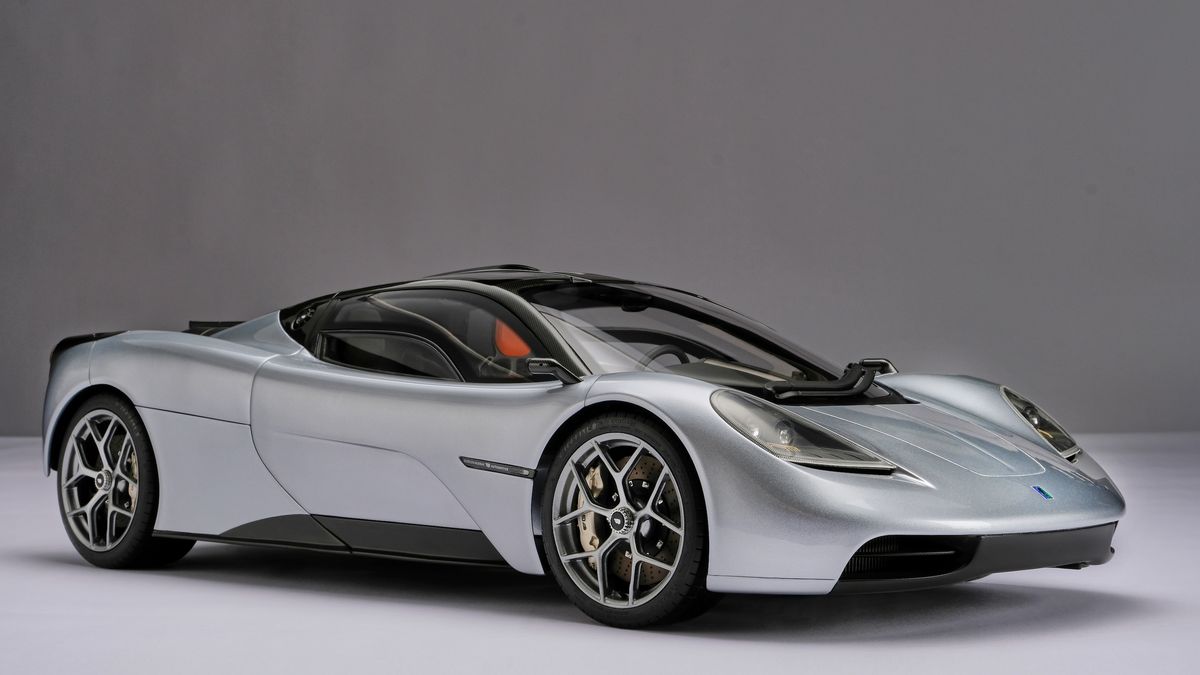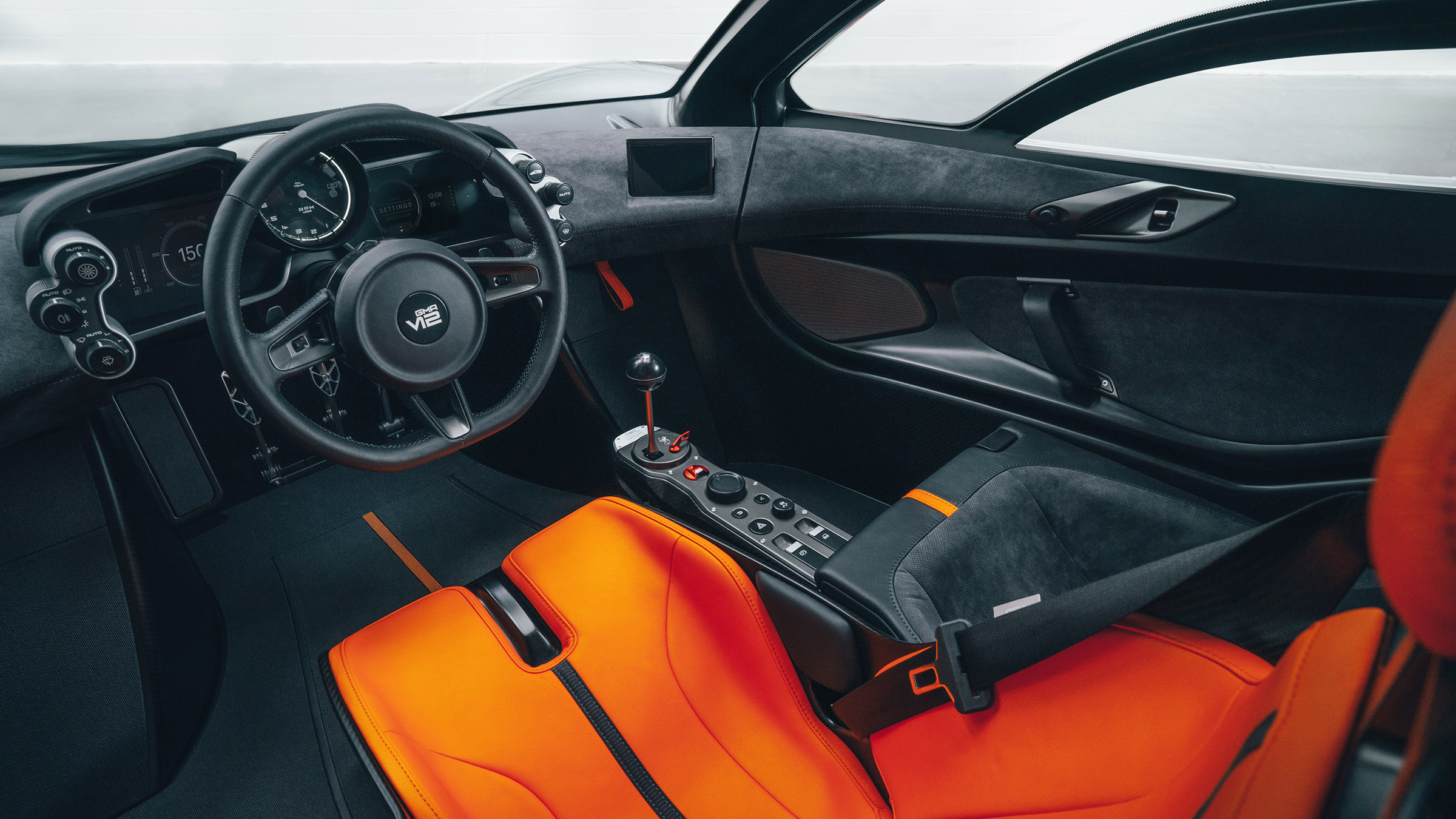GMA T50: The Best Car Ever Built

This is a car that reaches limits that no other vehicle can reach. A symphony of engineering purity, weight-saving refinements and mechanical artistry. It will almost never be bettered.
WHAT IS THIS CAR?
A broad question, so let us give you a broad answer. The successor to the McLaren F1. A design masterpiece to rival the Smart ForTwo. It's home to the best road car engine of all time. Old-fashioned but very up-to-date. The most fuel-efficient hypercar. Perhaps the greatest analog sports car of the last 25 years. The most addictive driving experience available today. Other superlatives will follow, but in basic terms it's a lightweight three-seater hypercar with a 12,100 rpm V12.
IS IT REALLY A HYPERCAR?
If you're a numbers person, the GMA T.50 is probably not a hypercar. It costs £2.8 million (£2.36 million plus VAT) but with just 664 horsepower it has less power than a McLaren Artura. Hypercars also tend to be grandiose and extravagant works of art, cars that have left driving behind in search of impact. Not the T.50. The only thing that matters here is the ride. It's small and relatively unadorned. And if push came to shove, we'd say it's more in line with a Lotus Exige, Porsche 911 GT3, McLaren 600LT or Alpine A110 than a Zenvo, Pagani, Bugatti or Koenigsegg. But essentially it's a happy mix of both.
AND HOW FAST IS IT? HOW FAST IS 0-100?
Easy answer: GMA doesn't know. It hasn't measured acceleration because it's not interested. Gordon Murray, the man behind McLaren F1 and the mastermind behind this, knows it will be fast, but he's more interested in sensation and experience than facts and statistics.
They know the top speed: 387 km/h. But only because they have to do it for ESP calibration.
Electric power has rewritten the speed landscape. Still, it's worth noting that after all these years, F1 remains the fastest naturally aspirated road car ever.
WILL T.50 BEAT F1 ON THIS?
Almost certainly. It may not have as much torque as the F1, but it has more power, better aero, traction and is almost 150kg lighter. More importantly, it's the fastest feeling car we've ever driven. It feels more like a superbike or supercharged Ariel Atom than a normal supercar. Thank the lack of weight for that. At 997 kg, it's at least 50 percent heavier than most of its rivals. What's exotic about the T.50 is not the art, but the engineering itself, the materials used, the rigor and focus applied to every element.
The Cosworth-built 4.0-liter V12 is a masterpiece, not only the highest revving road car engine ever, but also the fastest revving engine capable of reaching 52,000 rpm. Think about that for a moment. It's insane. The V12 drives the rear wheels through a six-speed manual gearbox from F1 specialist Xtrac.
WHAT TECHNOLOGY DOES IT HAVE?
It's more about what it doesn't have. No power steering. No dual-clutch transmission. No touchscreen. No adaptive dampers. No nose lift. No cup holders. A Sport mode that adjusts nothing but the throttle. No turbo. No wings. No fuss and bother.
Gordon says "it's all about honoring and improving F1", but it's perhaps more interesting to consider that 30 years later technology has seemingly added little to enhance the driving experience. It has helped elsewhere. The headlights weigh just 2.1 kg each but still throw a block of light miles down the road, and the entire 10-speaker, 700W Arcam sound system weighs just 4.3 kg.
The most important high-tech feature is the mirror cameras required by the central driving position (conventional mirrors would have to be mounted next to the headlights to get the right view). The screens are clearly visible and mounted exactly where you want them, but as with all these systems, side visibility is compromised.
WHAT ABOUT THE FAN IN THE BACK?
Yeah, that's what everyone's talking about. It provides 220 kg of downforce at 250 km/h, up to 460 kg at Vmax. Basically, it pulls air from the rear diffuser and blows it to the rear, reducing underbody pressure. It runs at up to 7,000 per minute and you hear it while driving.
The fan is really there for stability, not downforce and more grip. The fact that this lightweight car doesn't jerk when overtaking trucks and stays so calm at speed speaks of effective aerodynamics.
SO HOW DOES IT RIDE?
We'll go into more detail on this in the Driving tab, of course, but it all starts with the seating position. The symmetry of the center seat and the dashboard layout puts the brain at ease. Then comes the operation of the controls: not only is the accelerator pedal gorgeous to look at and incredibly light, but the way it springs, the way it works - and this is going to sound silly - the way it so precisely follows the movement of your foot in both directions makes it the best pedal we've ever used in any car.
And this relentless focus is applied everywhere. True, it's hard to get off the line without the revs rising, but just get it rolling with the clutch, then feed it some power and you'll pull away smoothly.
Low speeds are not his favorite: the suspension is stiffly sprung, the steering is heavy (though with some help below 10 mph), the shifting is sharp. It likes to be driven. And when you do, you discover that Gordon Murray and his team have created the best driving device ever conceived. It's not just the tangible driving characteristics that stand out here. Other cars emphasize the engine or the chassis. The T.50 celebrates everything. And because it gives you so much, you react to it not as a machine but as something more human. Instead of trying to get the best out of it, you want to do your best for it. It draws you into the experience so much that you don't need to travel fast, because you get so much from it at any speed. It's something unique.
Would you like to hear us talk about our drive of the T.50 through the Pyrenees for this review? Click on these words.
IS THERE ANYTHING ELSE THAT LOOKS LIKE A T.50?
Not really. There's art from Pagani, incredible innovations from Koenigsegg, but GMA's superpower is driver interaction, and this is best achieved by making it as light and analog as possible.
It's refreshing to find a car that doesn't focus on huge numbers, because it's in line with what we've been saying for a very long time: bigger numbers are not better. They tend to bring more weight and complexity, more electronic controls to supervise and assist. That's what sets the T.50 apart from every other hypercar. They all filter the experience, sending signals through processors, reducing your connectivity while increasing their capacity. It's a smart thing, it makes them travel faster, but it also filters the experience.
PRACTICAL.
On the road it has the same footprint as a Porsche 718 Cayman, but it seats three (admittedly the two outer seats are a struggle if you're over six feet) and packs 228 liters of cargo space between the two side lockers. There's also plenty of handy cabin storage under the outboard seats and in the lockers, and the layout and tactility of the switchgear has to be experienced to be believed.
WHERE DOES THE NAME COME FROM?
Every car designed by Gordon Murray is numbered. T stands for Type and this is his 50th design. Inside the trunk lid is a nice plaque listing Murray's achievements dating back to the T.1 in 1967. The McLaren F1, by the way, was T.22.
WHAT'S THE VERDICT?
"'The last great analog supercar', that was Gordon Murray's promise, and he has fulfilled his part of the bargain in stunning fashion"
You could drive the T.50 every day because it's empty in the back, easy to see out of and has generous speed bump clearance (no noselift here, that would add weight). Yet it is raw, pure and unfiltered. Its ride is a sensory bombardment: the V12 fills your ears, the steering tingles with feedback, the engine is a constant presence, you find yourself shifting gears for the sake of it. It pulls you into its orbit and never lets go.
This is reductive engineering at its best. It's not just about weight loss, it's about eliminating everything that hinders the ride. The result touches your driving centers in a way that is deeper, more intuitive and rewarding than any road car we've ever driven. Total immersion.
"The last great analog supercar", that was Gordon Murray's promise and he has delivered it in stunning fashion. As we enter the electric age, we can't see anything usurping it. So let's just say: it will never get better than this.
Thanks for reading.






























